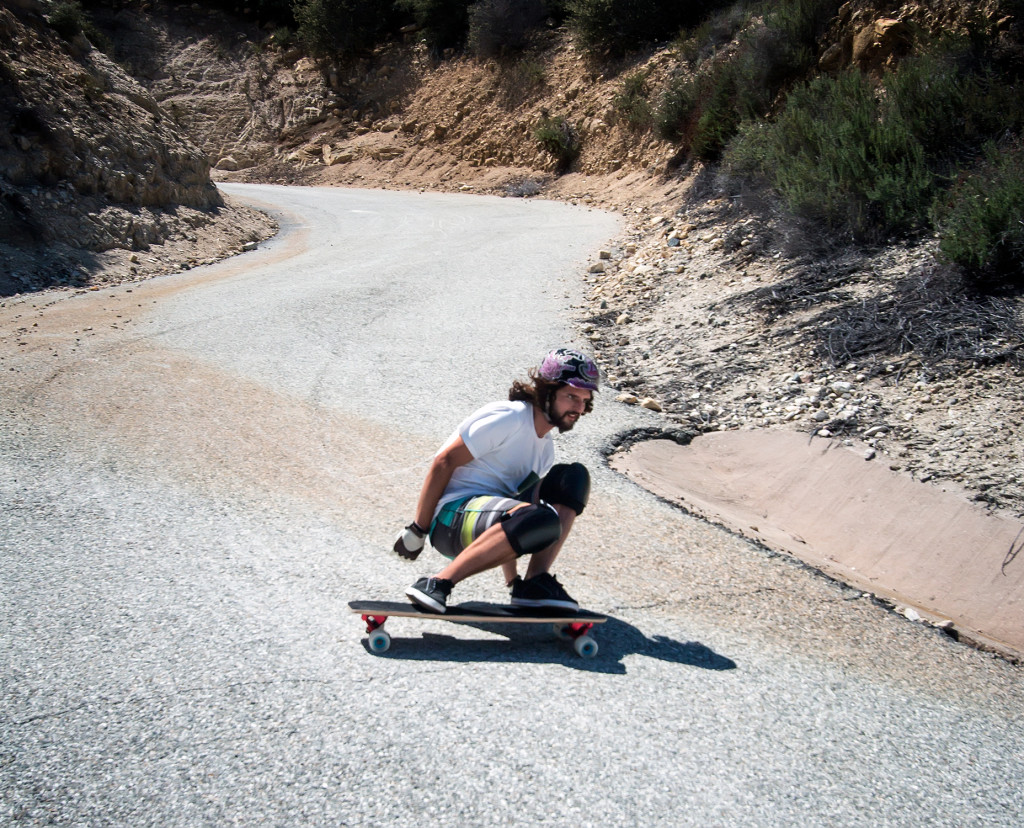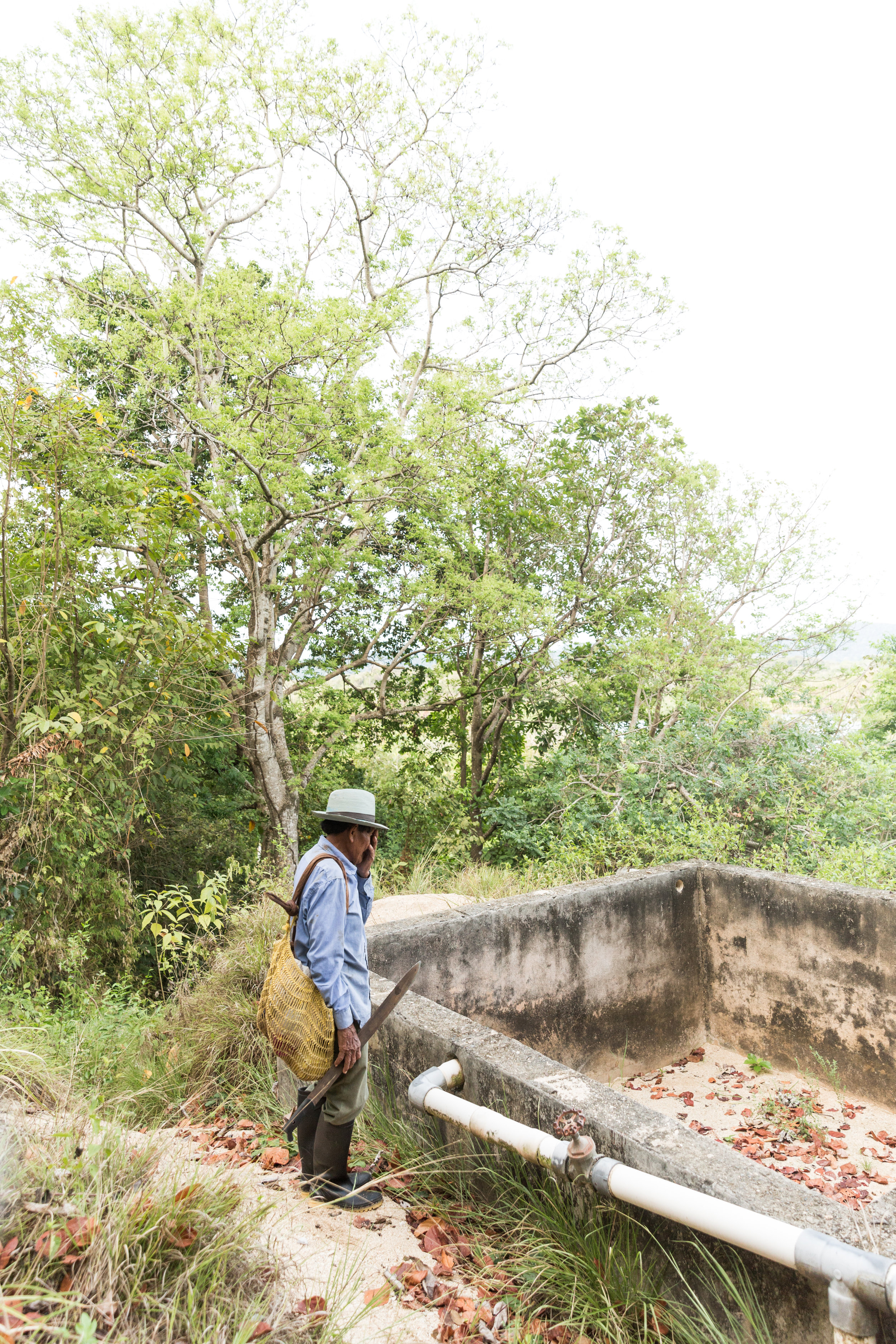Skatehike
Stay Wild
The Landyachtz crew went deep into the San Gabriel mountains of Los Angeles in search of an untouched switchback road
Story & Photos by Stephen Vaughn // @stephen_vaughn
Google Maps is a downhill skater’s best friend. It’s the only way I found a mystical road too good to be true—El Dorado: the Cogswell Dam.
We knew this wasn’t going to be an easy task. We loaded ourselves up with hammocks, sleeping bags, tents, and supplies for 2–3 days. What we didn’t account for was the 7-mile skate to camp being consistently uphill, turning our skate into a hike at many points. The only motivation was that certain-to-be-delightful cruise downhill back to the van. We trudged onward.
We stumbled across the most inviting fairy pool of a waterfall I’ve ever seen. Not knowing how much farther we would have to go before reaching our campground for the night, we spent a solid chunk of time chilling in the refreshing mist and cool temperatures of the falls. Our campground turned out to be right around the corner, turning the pit stop into a convenient water source that we returned to many times.
After setting up camp and unwinding a bit, a group of us decided to continue on the path in search of our final destination. Very quickly, the road turned into some of the most hairball, ridiculously steep asphalt and concrete I’ve ever seen. After about a mile of that insanity, the road turned into a dirt trail and we still hadn’t spotted the road for which we had embarked. Knowing it would be getting dark soon, we made the decision to turn around and skate back to camp for the night.
The next morning was a chilly. We warmed ourselves and our boards by the fire. After getting some food in our stomachs and some sunlight on our faces, we decided to embark on the last leg of our journey. Once more we climbed the steep incline and reached the dirt trail and within one mile we turned a corner to be greeted by the magnificent view of our hill.
Six long miles cruised by in a pleasant blur of trees and asphalt.
We reached the van and reflected on our journey during the ride back. Another Skate & Explore mission was in the books, and we could say that we were the first skaters to discover and ride this magical stretch of pavement.










